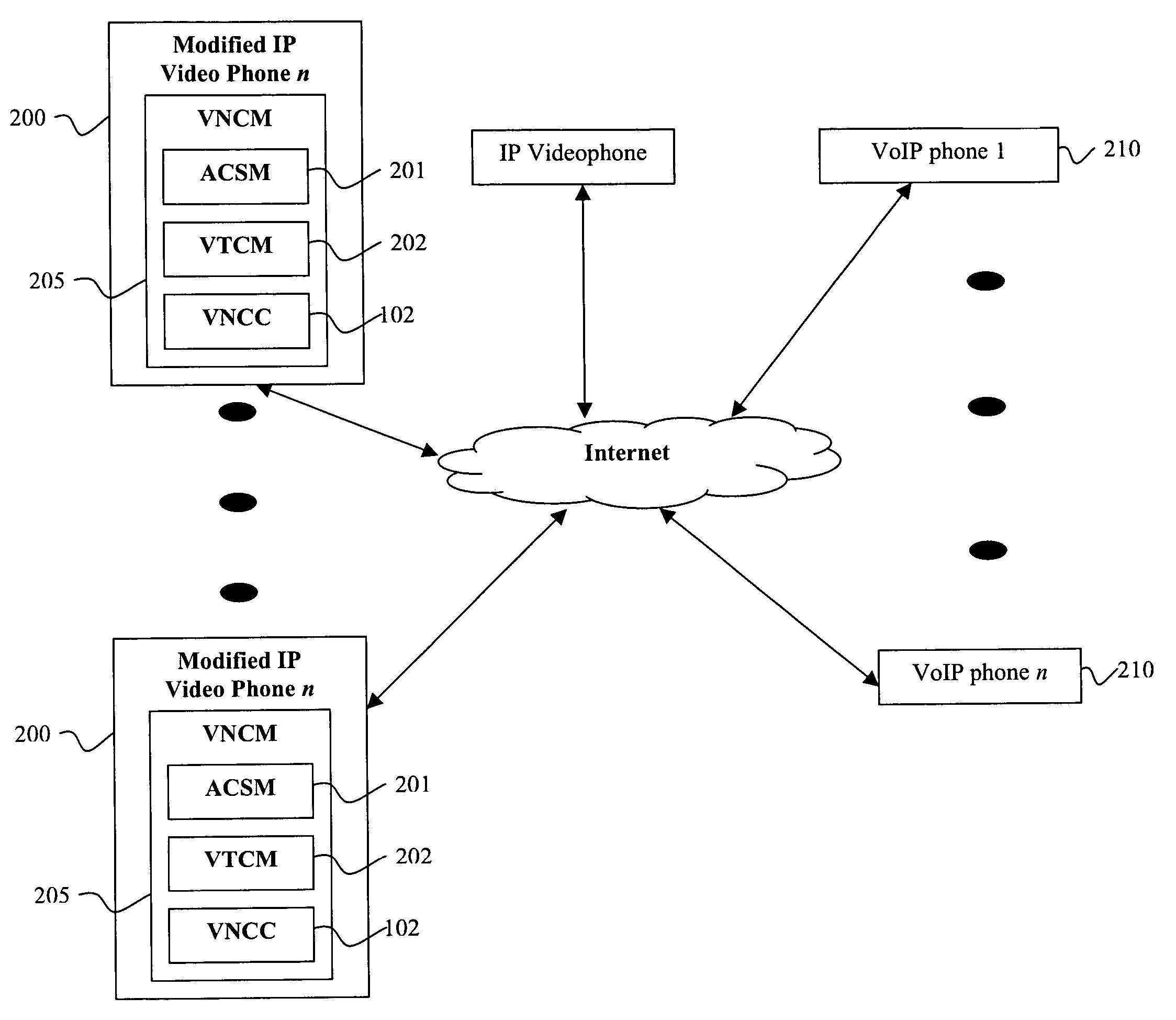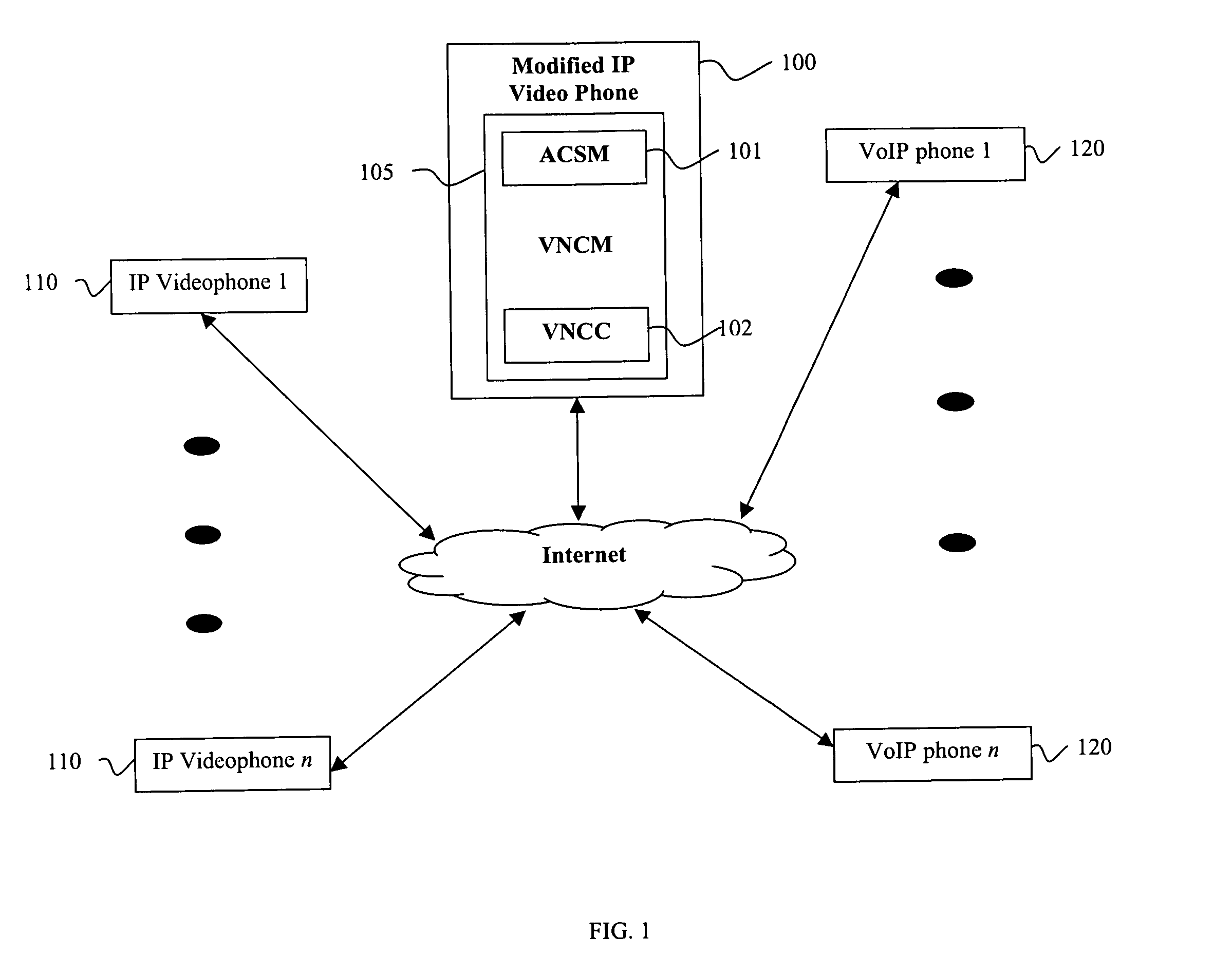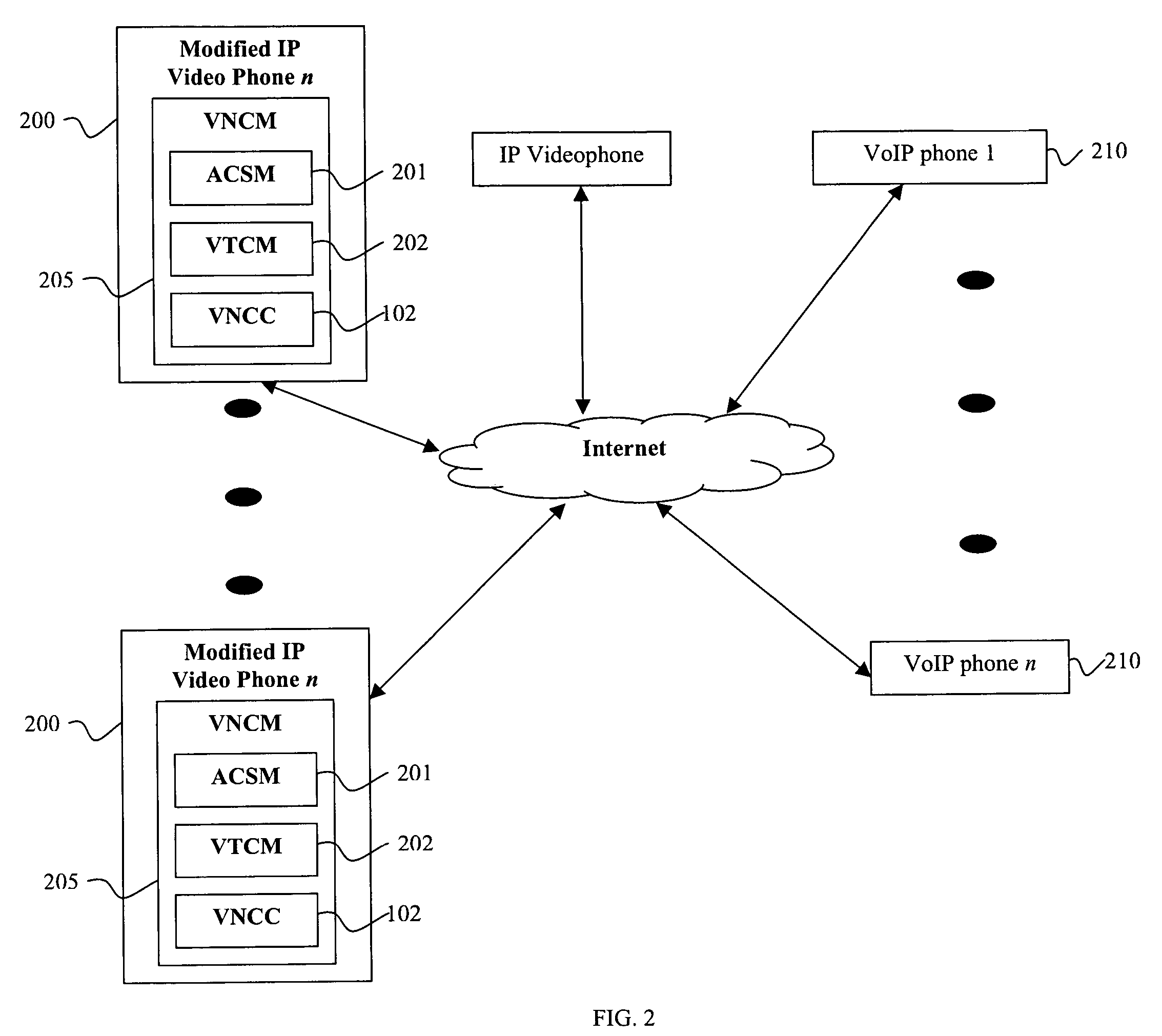Technique for providing virtual N-way video conferencing to IP videophones
a video conferencing and voice technology, applied in the field of video conferencing, can solve the problems of limiting the number of simultaneous video and voice channels that can be processed, limiting the number of possible simultaneous video channels, and requiring significantly higher processing power for video processing, so as to reduce the bandwidth required, limit processing power, and reduce the effect of bandwidth
- Summary
- Abstract
- Description
- Claims
- Application Information
AI Technical Summary
Benefits of technology
Problems solved by technology
Method used
Image
Examples
Embodiment Construction
[0016]In the following detailed description of the various embodiments of the invention, reference is made to the accompanying drawings that form a part hereof, and in which are shown by way of illustration, specific embodiments in which the invention may be practiced. These embodiments are described in sufficient detail to enable those skilled in the art to practice the invention, and it is to be understood that other embodiments may be utilized and that changes may be made without departing from the scope of the present invention. The following detailed description is therefore not to be taken in a limiting sense, and the scope of the present invention is defined only by the appended claims and their equivalents.
[0017]Described hereinafter is an exemplary scheme for providing virtual n-way video conferencing capability to IP videophones which have limited processing capability. The term “endpoint” refers to the IP videophone participating in the video conference. In some cases it ...
PUM
 Login to View More
Login to View More Abstract
Description
Claims
Application Information
 Login to View More
Login to View More - R&D
- Intellectual Property
- Life Sciences
- Materials
- Tech Scout
- Unparalleled Data Quality
- Higher Quality Content
- 60% Fewer Hallucinations
Browse by: Latest US Patents, China's latest patents, Technical Efficacy Thesaurus, Application Domain, Technology Topic, Popular Technical Reports.
© 2025 PatSnap. All rights reserved.Legal|Privacy policy|Modern Slavery Act Transparency Statement|Sitemap|About US| Contact US: help@patsnap.com



